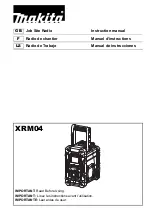
7
XP Transponders User Guide Rev 1.3
b)
GPS data is incorporated into the command and control protocol packets on XP serial interface
Com0. For more information, see the Sagetech XP Transponder Serial Communication
Document.
Note
: Sagetech recommends using the external Accord Technology NexNav Mini
receiver. It is the smallest TSO-C145c Class Beta-1 receiver we have identified.
Note
: Do not implement both external GPS data to Com2 and flight computer GPS
data to Com0 at the same time. The GPS Source byte of the Installation Message
controls which interface is used. For more information, see the Sagetech XP
Transponder Serial Communication Document.
If no GPS source is connected to the transponder or if the GPS data is determined to be unreliable, the
ES messages are still transmitted, but without GPS-based position data.
Mutual Suppression Functionality
The Sagetech transponders include a mutual suppression line designed to coordinate transmission of
pote tiall o fli ti g sig als. Whe the XP t a spo de ’s Mutual “upp essio li e is pulled do it
stops transmitting until the mutual suppression line re-opens. The transponder starts transmitting again
within 15 microseconds of the end of the mutual suppression pull-down condition. Sagetech
recommends use of an open collector transistor circuit able to sink 1 mA to drive this interface. Interface
must be able to pull this line below 400 mV to ensure transponder is fully suppressed. When not
suppressed the transponder weakly pulls up the Mutual Suppress line to the input supply voltage (with
range between 10 to 32 V). No pull-up resistor is required on customer hardware.
Leave the Mutual Suppression pin unconnected if not used.
XPG-TR does not have Mutual Suppression functionality.
Electrical connections to the transponder, including the Mutual Suppression signal, are defined in detail
in Appendix C of this document.
Summary of Contents for XPC-TR
Page 1: ...DOC7010R01 7 July 2014...







































